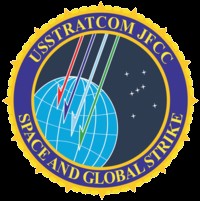
Global StrikeOn January 10, 2003, the
new Unified Command Plan (Change 2) assigned a new mission to STRATCOM:
Global Strike. The Unified Command Plan defined the new mission as:
"providing integrated global strike planning and
command and control support to deliver rapid, extended range, precision
kinetic (nuclear
and conventional) and non-kinetic (elements of space and
information operations) effects in support of theater and national
objectives."
STRATCOM (and before it Strategic Air Command and the
Navy) has provided global strike capabilities for decades under the
Single Integrated Operational Plan (SIOP), but
the SIOP name was formally dropped in 2003 and replaced with Operations
Plan (OPLAN) 8044. The name change reflected an effort to transform
the top-heavy SIOP into a family of smaller flexible strike plans to
better reflect the demise of the Soviet Union, a new emphasis on China,
and planning against weapons of mass destruction proliferators.
Global Strike is different than OPLAN 8044. It is
focused on small prompt and preemptive strikes against weapons of mass
destruction targets anywhere on (and below) the surface of the Earth.
The military operationalization of the Global Strike mission is
Contingency Plan (CONPLAN 8022), which became operational in the fall of
2004.
»
Global Strike Command Becomes Operational
»
Space
and Global Strike Component Command Concept of Operations
»
Report: Global Strike
Chronology
»
Divine Strake: First large-scale nuclear simulation against tunnel
|

